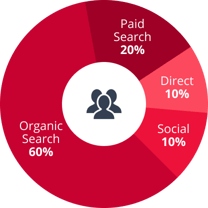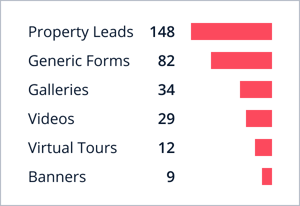Reading time: Approx. 8 min
Why do you have a website? It sounds like a silly question, but you’re not going to get the most out of your website if your answer is “Because everybody else has one.” It’s important to define the purpose as the reasons vary depending on your business.
As an example, Airbnb's vision is “creating a world where everyone can belong”. Their website delivers a lot of content around experiencing or “living” a place, not just visiting it. Of course, this strategy and the content based on it are just a means to attract users to a website that is centred around selling short term rentals and managing the booking from a host and guest perspective.
The purpose of your business, and the vast majority of real estate agencies, is very different. Your website doesn’t conclude sales online. You want leads! Whether it’s sellers, buyers, tenants or landlords, in the end you want them to enquire about a property or a service you offer.

Whether or not it is to generate leads, you should have now defined the purpose of your website. As with everything you do, refer back to your Brand Strategy, specifically the question: “What is the journey that we want our users to take with us?”. The answers to this question will guide the content which attracts users to your website. We cover content strategies and running killer campaigns across channels in future material. This course will give you a solid foundation for generating, not only content that is relevant to your strategy, but that users are looking for and will find valuable.
PRO MOVE - Generating content that converts users to leads needs to be planned out and executed across multiple channels (sometimes including traditional) to reach the greatest audience. Make sure you plan your campaigns well in advance with a studio experienced at tying all the pieces together.
It’s now up to your website (as the destination) to convert that user into a lead. We cover this in detail next week.
As soon as your website is up, you’ll want to start tracking its performance and the performance of any strategies you’re employing to send visitors to it. Some of the more important metrics to measure shortly after launching your website are:

Source of your traffic
Tracking the source of your traffic will let you know where your visitors are coming from - including any of your marketing campaigns. This is the best way to measure your return on investment over time and where to further invest additional spend.

By grouping these metrics together you'll be able to see where your visitors are coming from, what they're doing on your website and make informed decisions about marketing efforts.
Copyright © 2025 Prop Data (Pty) Ltd Privacy Policy